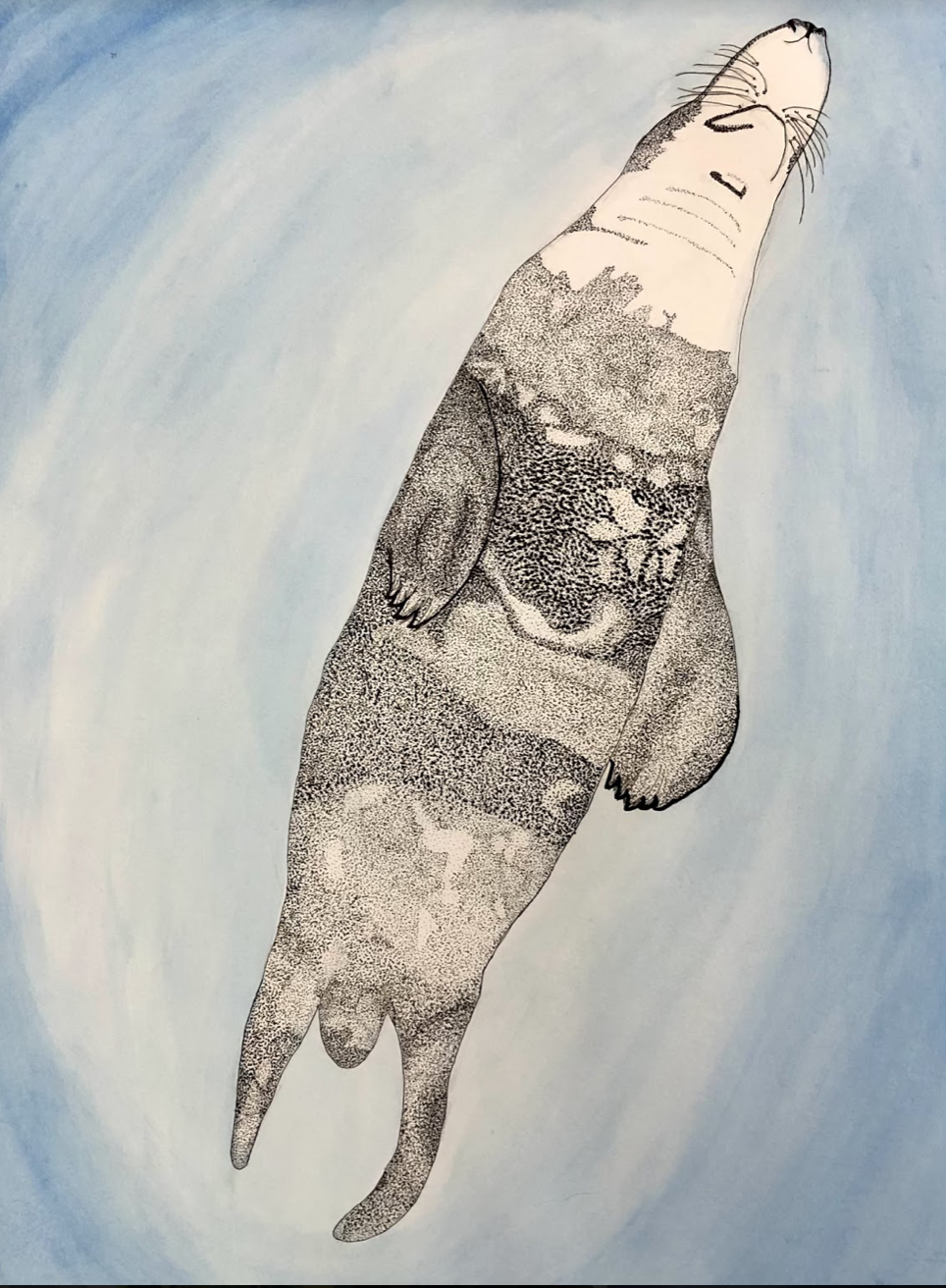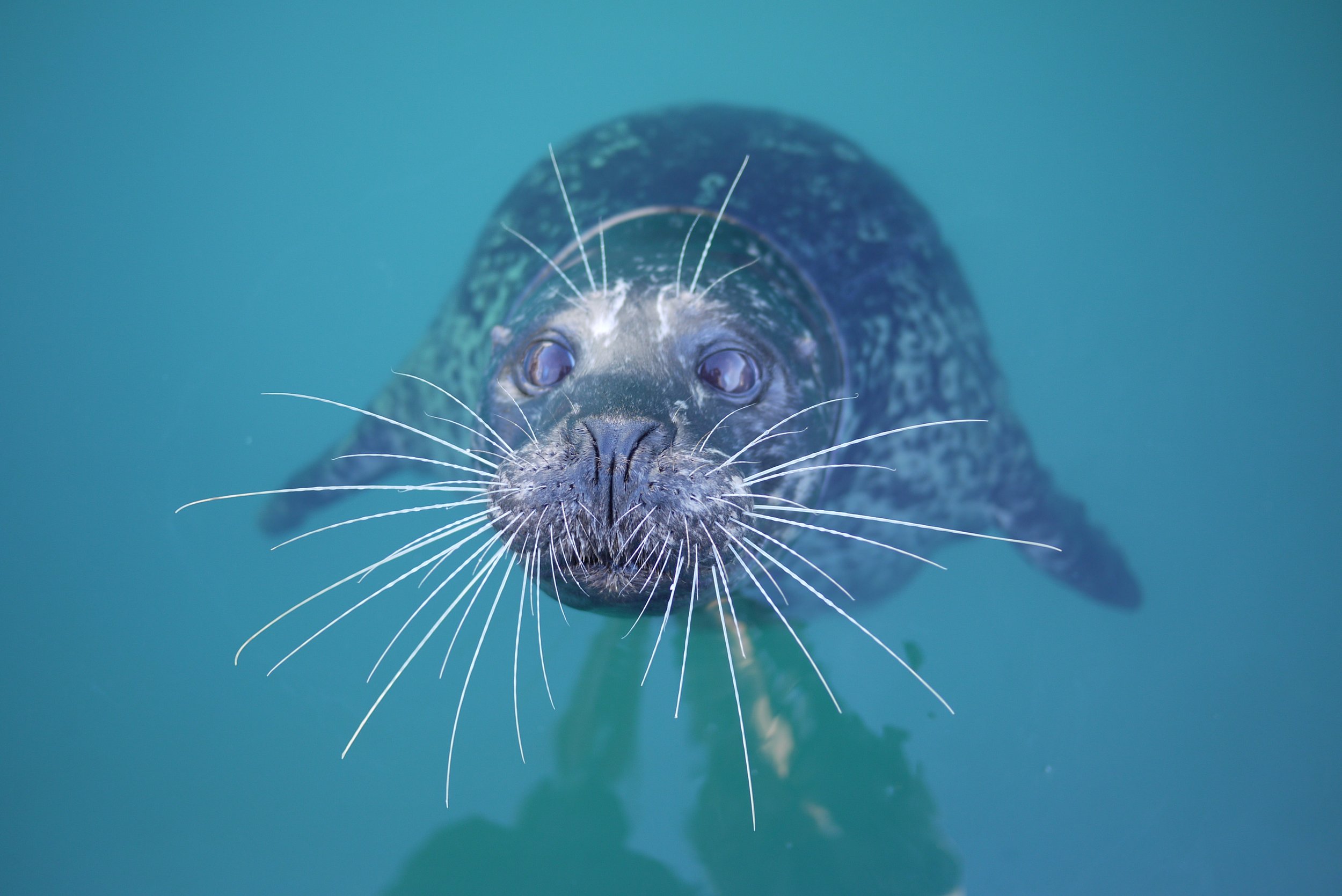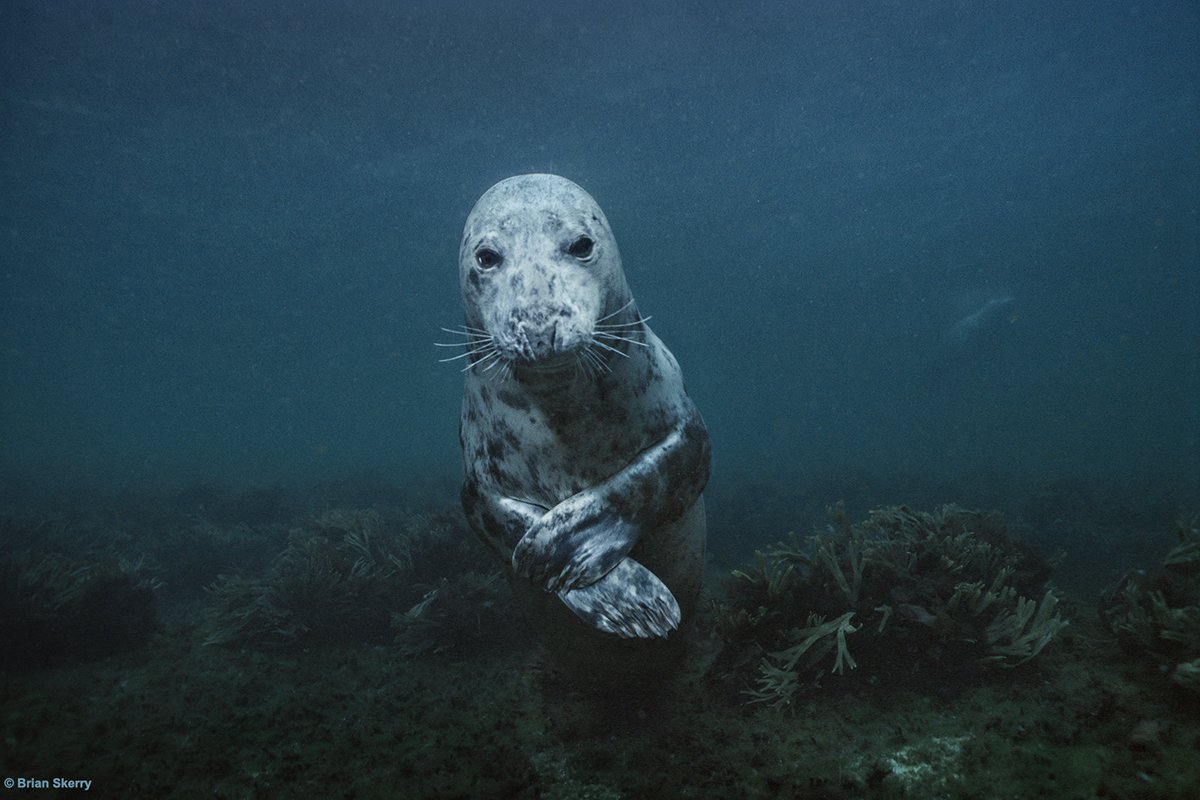
We share our shores with seals. What does that mean now? What has it meant historically? Who are these amazing beings? Let’s explore the cultural and natural histories of seals and our dynamic and evolving relationship with them on the Northeast Coast of North America.
This website grounds a traveling exhibit created for the New Bedford Whaling Museum. See the calendar for more!
Image: Visitors on Cape Cod enjoy gray seals resting on shore at low tide. (Photo: Elizabeth Bradfield)
-

Meet the Seals
Seals are part of a larger group of marine mammals (whales, dolphins, seals, etc.) called the “pinnipeds. “ The Wampanoag word for seal is Onkeehq. Read on to learn more!
-

Evolution and Origins
Science, traditional ecological knowledge, and personal experience all give valuable insights into the stories of seals and their origins. Read on to learn more.
-

Cycles and Movements
People have always noticed and followed the lives of seals…. what does a year in the life of a seal look like? Read on to learn more.
-

Seals' Roles in the Ecosystem
Gray and harbor seals have been on the Atlantic coast for millenia and have been intertwined with human lives for all that time. Read on to learn more.
-

What do Seals Eat?
Seals are tied to land and sea in many surprising ways. As predators and as prey. In life and in death, seals are vital. Read on to learn more.
-

Relationships and Connection
Kinship is not just between people, but between all living beings. Read on to learn more.
-

Living in a Human-Impacted Ocean
Entanglement, pollutants, boats… humans impact marine mammals. Read on to learn more.
-

Bio-Inspired by Seals
What have seals inspired in human technology? SO MUCH! From waterproof parkas to sensory devices… Read on to learn more.
-

Seals and Societies
Humans and seals have lived through cycles of co-existence, exploitation, and protection. Our relationship continues to shape and evolve. Read on to learn more.
-

An Unfolding Story
Every day, new ideas, histories, data points, narratives, knowledge, memories, and connections emerge through research and conversation. Read on for more.
